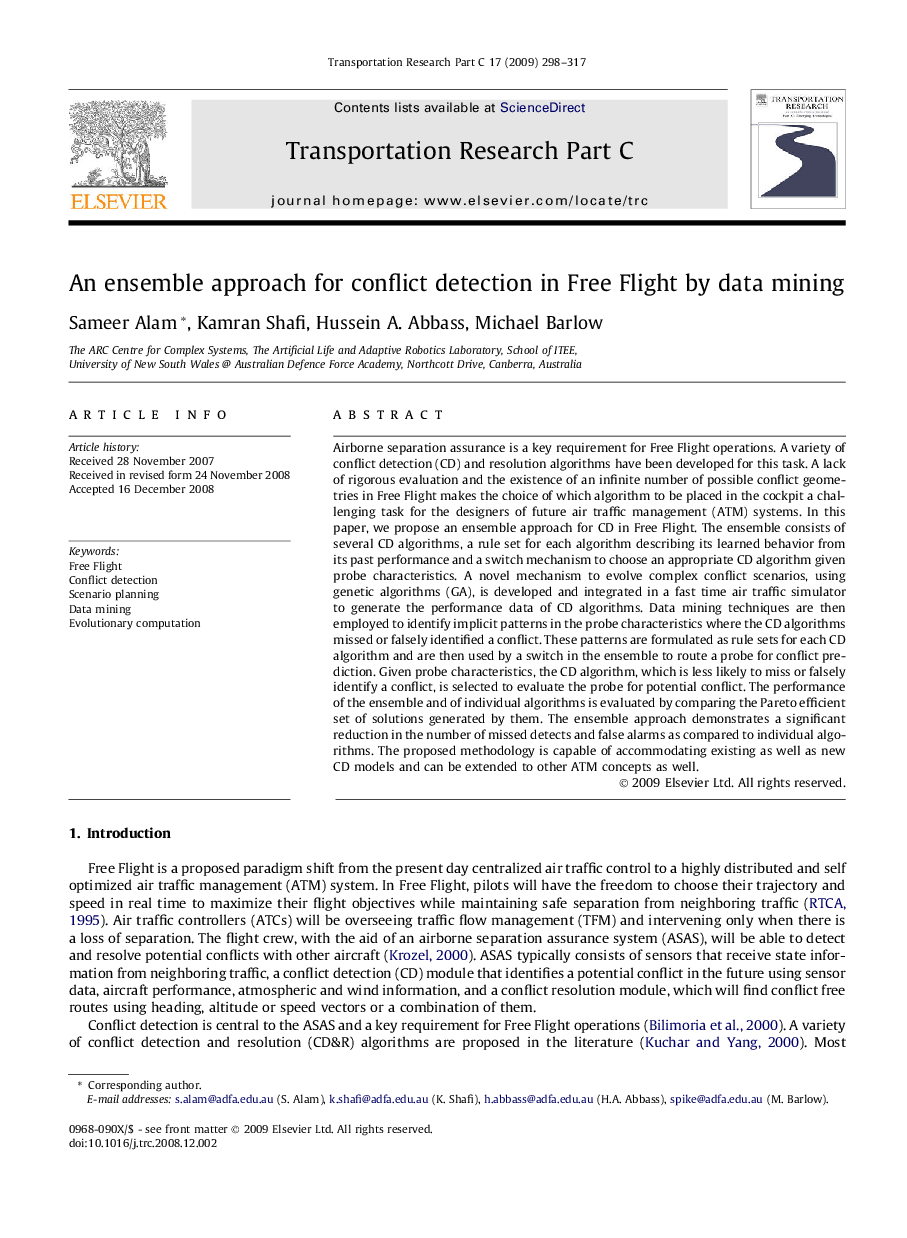| Article ID | Journal | Published Year | Pages | File Type |
|---|---|---|---|---|
| 525484 | Transportation Research Part C: Emerging Technologies | 2009 | 20 Pages |
Airborne separation assurance is a key requirement for Free Flight operations. A variety of conflict detection (CD) and resolution algorithms have been developed for this task. A lack of rigorous evaluation and the existence of an infinite number of possible conflict geometries in Free Flight makes the choice of which algorithm to be placed in the cockpit a challenging task for the designers of future air traffic management (ATM) systems. In this paper, we propose an ensemble approach for CD in Free Flight. The ensemble consists of several CD algorithms, a rule set for each algorithm describing its learned behavior from its past performance and a switch mechanism to choose an appropriate CD algorithm given probe characteristics. A novel mechanism to evolve complex conflict scenarios, using genetic algorithms (GA), is developed and integrated in a fast time air traffic simulator to generate the performance data of CD algorithms. Data mining techniques are then employed to identify implicit patterns in the probe characteristics where the CD algorithms missed or falsely identified a conflict. These patterns are formulated as rule sets for each CD algorithm and are then used by a switch in the ensemble to route a probe for conflict prediction. Given probe characteristics, the CD algorithm, which is less likely to miss or falsely identify a conflict, is selected to evaluate the probe for potential conflict. The performance of the ensemble and of individual algorithms is evaluated by comparing the Pareto efficient set of solutions generated by them. The ensemble approach demonstrates a significant reduction in the number of missed detects and false alarms as compared to individual algorithms. The proposed methodology is capable of accommodating existing as well as new CD models and can be extended to other ATM concepts as well.
